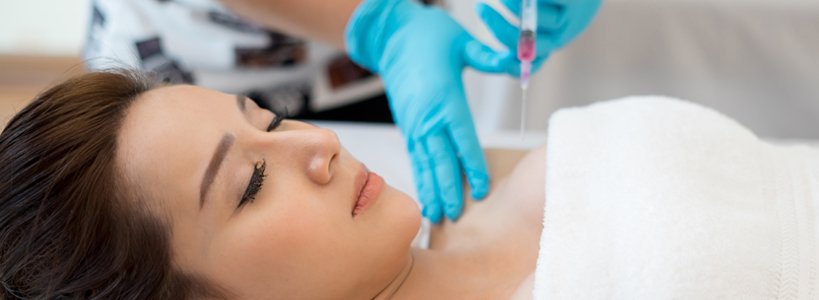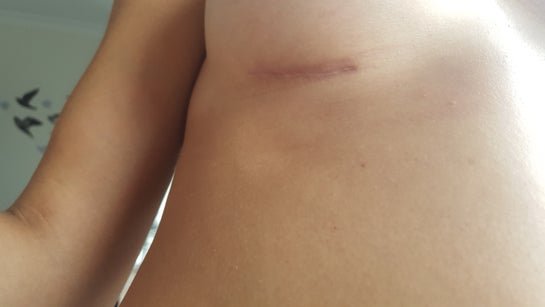Fat transfer breast augmentation is an increasingly popular procedure for individuals looking to increase the size of their breasts without undergoing breast implants or other types of breast enhancement methods.
What is Fat Transfer Breast Augmentation?
Fat Transfer Breast Augmentation is a breast enhancement using fat transfer can be a great option for women seeking a very natural procedure.
Fat transfer breast augmentation is also referred to as autologous breast augmentation.
It uses liposuction to take fat from another body area, such as the abdomen, love handles, thighs, or buttocks.

You will be able to choose the specific area where your fat will be harvested for use in your breasts.
This method of breast enhancement is truly a more natural alternative to breast implants because it uses your own body fat.
Of course, you should still consult with your plastic surgeon for advice on fat transfer breast augmentation before deciding if this is the right procedure for you.
Elements of your consultation will include a discussion on the cost of fat transfer breast augmentation.
How Long Does Fat Transfer Breast Augmentation Last?

Once the fat cells are transferred to your breasts, some of the cells are reabsorbed, so more filling is needed.
The fat that remains during and after the healing process, in a span of about three months, has developed blood vessels in the adipose tissue, resulting in increasing the breast volume over a long period of time.
However, there are some things you need to know when considering the results:
There will be some reabsorption of the injected fat and it will reduce the volume slightly.
As you gain or lose weight, your body shape may change and so may your breasts.
Fat cells can grow large or small due to your weight fluctuations. If you lose significant weight, it can affect your process results.
Breast Augmentation Recovery Tips
The key to maintaining your breast augmentation results includes the following:
- Live a healthy lifestyle
- Have a diet that is rich in fruits and vegetables
- Organize an exercise program
Natural fat transfer breast growth is 100% natural and allows you options to shape and reshape your breasts. Natural fat can also be used to create better breast symmetry or to fill in the sunken area left over from a lumpectomy.
Breast Augmentation Surgery Cost
The average cost of breast augmentation surgery by 2021 from the American Society of Plastic Surgeons is $ 4,516.
This average price is a combination including anesthesia, operating room facilities, or other related expenses.
As we know that the surgeon’s fee for breast augmentation depends on their experience, the type of procedure used, and the geographical location where they undergo the surgery.
Also Read: Tonsil Stones: Causes, symptoms, and treatment
Most plastic surgeons offer patient insurance plans for breast augmentation, so be sure to ask.
Breast augmentation costs may include:
- Anesthesia fee
- Hospital or surgical facility costs
- Medical examinations
- Postoperative wear
- Prescriptions for medicines
- Surgeon fee
When choosing a board-certified plastic surgeon in your area for breast augmentation, keep in mind how important the surgeon’s experience and your comfort with him or her are to the final cost of the surgery.
Fat Transfer Breast Augmentation and health insurance
Most health insurance plans do not cover cosmetic breast augmentation costs, related problems, or another surgery to modify the appearance of your breasts.
Some carriers also exclude breast diseases in patients with breast implants.
Carefully review your health insurance policy before strengthening your breast.
Swelling day by day breast augmentation during recovery
It is common to experience pain and swollen breasts after surgery and during recovery. swelling is the body’s way to heal tissue damage and protect the area.
How common is swelling after breast augmentation?
Your breasts will feel tight after surgery and the swelling will peak after three to four days. However, you may experience some swelling for up to three months after surgery and it may take up to six months for the implants to fully settle.
You can expect to have more swelling when;
- You have implants under your chest muscle because it contains incisions in the chest muscle, as well as breast tissue and skin, so there is more tissue to heal
- You have large implants — this means that the breast and muscle tissue are stretched
- You smoke – smoking slows down the healing process
- You are experiencing some pre-existing medical conditions such as diabetes
How long does the swelling last after breast augmentation surgery?
Most patients find that any swelling subsides for about three weeks after surgery. However, it is common to experience some swelling for up to three months. You can learn more about what to expect in recovery here.
Is asymmetric swelling normal after breast augmentation surgery?
Some people experience uneven swelling in the chest after augmentation surgery and this is completely normal because it is more likely that the breasts will heal at different rates. It usually resolves itself in a few weeks.
However, uneven swelling may be a sign of something more serious, such as the accumulation of blood or fluid at an injury in one of the breasts. If you are anxious or experience more pain or swelling on one side of the chest than on the other, talk to your surgeon as soon as possible.
How Can I control Abdominal swelling After Breast Augmentation Surgery?
After your operation, gravity causes inflammation in your breast tissue to move to the abdomen.
You can help reduce inflammation in your abdomen:
- Drink plenty of water
- Walk around as soon as you think you can do it
- Stopping or Change Pain Medications If Your Swelling Is Severe
- Narcotic Painkillers Can Cause Constipation and It Is Important To Talk To Your Surgeon Before Making Any Changes In Your Pain Medication
- Talk to your surgeon about taking stool softeners if constipation causes your bloating
Abdominal swelling is completely normal and resolves on its own in a few days. However, it is also common to experience short-term bloating as the effect of the medication and lack of mobility can slow down digestion and cause constipation.
How Can I reduce swelling After Surgery?
Wear a supportive surgical bra, which gently compresses the breasts to reduce inflammation.
Talk to your surgeon about taking arnica supplements, this herb can be applied to the skin to treat inflammation and wounds.
Being very active will only intensify the healing process, so do gentle exercise only for the first few weeks after your operation.
If the top of your breast still feels swollen three months after surgery, it could be implanted. Implants can take six months or more to fully settle.
Fat Transfer Breast Augmentation Benefits
You will experience several benefits from breast augmentation with fat transfer:
- The safest, most natural breast augmentation method
- Your own body fat is used to eliminate the risk of an allergic reaction when the implant is inserted into your body.
- Long-term, naturally occurring results
- Minimal invasive process with less idle time and shorter recovery period
- Provides additional body sculpting benefits to the area where fat is accumulated through liposuction
- No scars in the breast area
Fat Transfer Breast Augmentation Risks
The risks of fat transfer breast augmentation include:
- Cysts
- Infection
- Microcalcification
- Necrosis (death) of fat cells
- Possibility of some of the transferred fat cells leaving the breast area.
Your plastic surgeon may also ask you to wear a tissue expansion system in the weeks leading up to your breast augmentation surgery to improve your results.
You may further need booster injections to retain your improved shape if you choose this surgery.
Breast Augmentation Scars

No matter whatever be the surgery, a breast lift involves incisions in the skin. Incisions can scar you – your skin’s way of building new tissue and healing the wound.
However, there are ways to reduce scars before, during, and after a breast lift.
Finding an experienced and certified plastic surgeon is your first step.
Portfolio shopping can in understanding what a surgeon is doing; as well as determine the results you are going to see.
Undergoing the treatment with an experienced surgeon can ultimately minimize the risk of your problems causing scarring. They will also teach you how to protect and treat your skin after surgery.
Keep reading to learn more about the different techniques available, the scars they can leave behind, and how to reduce their appearance.
Breast lift vs Breast augmentation
Breast augmentation is a simple surgical procedure to increase cup size or restore breast size by using breast implants or fat transfer.
Breast lift is a procedure to lift the breast tissue and areola to improve the shape and correct sagging breasts and nipples, reducing breast size or widening the aurora.
A breast lift is a lift of the breast tissue without adding any size or fullness. Breast augmentation involves implants that increase the shape of the breast.
Often patients receive breast lift and breast augmentation at the same time to achieve the final look they want.
When Can I Sleep on My Side After Breast Augmentation?
It is important to lie on your back for a while after breast augmentation surgery. To reduce inflammation, you need to lift your upper body, especially when you are sleeping. It helps reduce fluid accumulation, improves blood circulation, and keeps the breasts in a more natural state.
Another reason to wake your body up and sleep is that it helps with mobility. Some strength is needed at the top to get out of bed.
During recovery, it is not advisable to use your arm and chest muscles, and sleeping upright can ensure that you do not need to reach or pull with your arms to get out of bed.
It is advised to sleep in recliners or use special pillows to keep things in proper condition.
After several days, when the swelling and bruising have subsided, you can usually lie on your back if you feel comfortable.
However, it is important that you do not sleep on your side or move to your side during your sleep. This can put pressure on the implant or your incisions while you are healing, which can affect your results.
Patients can usually return to side sleeping (wearing a supportive bra) within 2 weeks. Lying on your stomach is definitely not until you get the green light from your surgeon.




